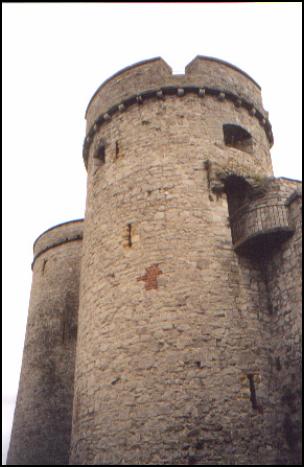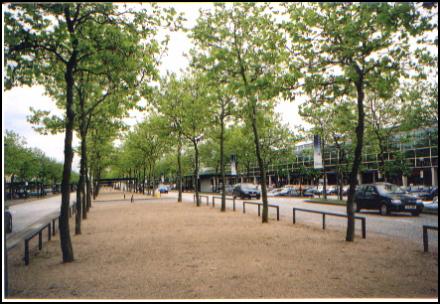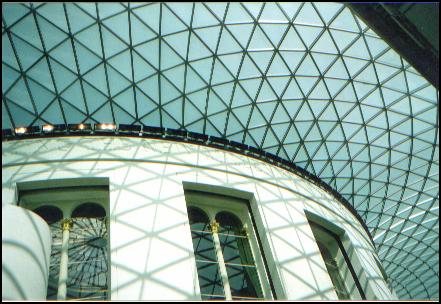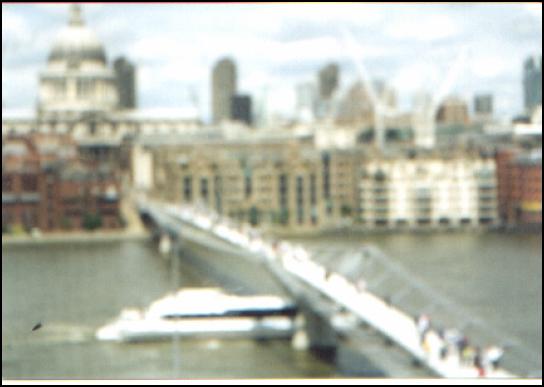Stateside: There Was An Old Lady In London
There was an old lady in London
As you can tell from this column's title, I started writing it in Limerick. The medieval western Ireland city, that is, with its 1197 charter even older than London's. Limerick was the pot of gold at the end of my trip - even magically creating the perfect soundtrack for me as the bus took me to Shannon airport for the flight home. "Which one of you is going to California?", asked an elderly lady at the front of the bus, "You should sing along." The radio was playing one of those songs of lost love so prevalent in Irish and country music: "She said, 'I'm going to California to taste the sunshine and the wine.'" Looking out at the green fields, the drizzle and the hawthorne hedges, I felt like at last I was taking a proper leave of Taranaki.

Until that daft old Bunratty Castle, with its Medieval Banquets and Folk Park, hove into view. I far preferred the castle on King's Island in the centre of Limerick, about which rages controversy of the interpretive kind. In the hopes of emulating the commercial success of Bunratty, the council had hit up local businesses to contribute to an "imaginative" interpretation centre, which over the years has never succeeded in bringing any more foot traffic to the area than if the breached walls of the castle had just been left open and people allowed to go there for free. A much better investment was the walking map, available for free from the tourist information centre, which leads the tourist around the southern tip of the Island.
The castle was built in about 1210 by Prince (later, King) John of England, and the original city used to have a wall around it, behind which the townsfolk gathered in times of siege. It was to Limerick that the Irish supporters of James II fled after the Battle of the Boyne, pursued by William of Orange. Across the river from the castle is the treaty stone, on which a treaty was signed allowing the defeated garrison to leave with honour and guaranteeing freedom of religion for the Irish people. The treaty, however, was repudiated by the English Parliament, so - according to my trusty Berlitz pocket guide - Limerick carries the title of "City of the Violated Treaty". The Anglo-Norman name from which the modern name derives - Luimneach - simply means "bare spot".
I arrived in the west by way of the train from Dublin - an adventures in itself, considering the carriages were so old they were patched with plywood! I'd flown from Heathrow, having successfully - but only just - avoided taking the tube out to the airport. I ran, yes ran, across four lanes of traffic to get back to the AirCoach bus stop I'd been waiting at for an hour and had just given up on. I hate the London Underground. Some bits of some stations I do like - the tiles at Tottenham Court Road, for example, or the post-modern industrial stations on the Jubilee line and the new stations in the outer zones. I even quite liked the sensation of walking down what seemed like 400 Victorian spiral ironwork stairs at TCR as a short cut to the platform. But mostly the stations and the trains were airless, hot, crowded, decidedly bag-dragger unfriendly, and a tad panic-inducing.
The weather in London was fabulous all six days I was there. I stayed in a tiny room with an ensuite-in-a-cupboard at Lords Hotel in Bayswater, but despite the duct tape on the edges of the interminable stairs up to my attic and the peeling wallpaper in the stairwell-cum-atrium, the room was clean, the service friendly and helpful, and the breakfast of two bread rolls and some jam - if somewhat less than what I'd grown accustomed to - filled the spot. For 42 pounds a night in the heart of tourist London, what more can you want? I could walk through nearby Kensington Gardens to Hyde Park and The City, there were two Underground stations nearby and plenty of buses. On my first expedition I also carried on past St. Paul's to the Millennium Bridge, which is for pedestrians only and crosses the Thames by the Tate Modern, where an exhibition of Picasso and Matisse was drawing the crowds.

Having colonial administration research to catch up on in Milton Keynes, I took a very fast train ride to that city from London one day and found myself in an entirely other world! It is, I think, the last of the New Towns to be built - in the late '60s - so is laid out with very wide streets, is very pedestrian friendly but has plenty of parking. The 20 minute walk from the railway station to the huge shopping centre passes through what can only be described as an Office Worker Theme Park. I generally avoid shopping malls but Midsummer Place is so well-designed, with such a high ceiling and walls letting in tons of natural light, that I felt at-ease enough to venture into two establishments I usually need to be dragged kicking and screaming into - a make-up counter and a hairdresser. There's a traditional outdoor market in an area adjacent to the mall as well, and the train trip takes you through such pretty countryside - along canals with wildflowers growing beside them - that it makes a great day trip. The original village of Milton Keynes is in the Domesday book, and the two other old villages that mark the points of the triangle on which the New Town is built are interesting in their own right. Stony Stratford (not to be confused with nearby Fenny Stratford) was infamous for witch trials, and Newport Pagnall is where 007's original car of choice - Aston Martins - are built.

The one day that I decided to do sightseer things on my own in London turned up a mixed bag of experiences. I wasted an hour lining up to go into the House of Commons at question time only to discover that the sign saying you "might" not get in at 2.30 pretty much meant you "won't" get in at 2.30. Perhaps it was a particularly hairy question time. Tours of the buildings don't start until August. Still, I got a nice suntan and wrote a letter while waiting and watching the groundsman mow the lawn around the statue of Cromwell. Giving up on parliament, I set off over nearby Lambeth Bridge and discovered the delightful Museum of Garden History, which is in a church that boasts the grave of Capn Bligh of 'Bounty' fame. The writer in me couldn't help formulating a story for the couple seated at the next table in the museum's little cafe - a handsome white-haired gent advising buxom black-haired young woman what to pack for their upcoming weekend tryst in the countryside. Well, I mean to say - parliamentarians have more than one natural habitat, surely!
From there I went to the British Museum to see the exhibition just opened about the treasures of ancient Yemen. In order to get people to cough up 7 quid to look at artifacts from a country people don't generally associate with being either ancient or important, the exhibition is called "Queen of Sheba". The kingdom of Sheba (Saba) in what's now known as Yemen. was a powerful incense trading state, and my favourite part of the exhibition was the section about frankincense, complete with its wafting fragrance. All the cloying bait about the Queen of Sheba in European art was a tad too much for me, and overall the exhibition seemed a bit lightweight for such a venerable institution, but perhaps I was getting jaded. The most fabulous thing about the BM is its new Millennium Courtyard, again so spacious and full of light it was pleasing to the spirit. And the food at the concession was pretty good too - I notice they took particular care in pointing out they use no GM ingredients.

Wobbly Bridge From Wobbly Camera
a.k.a. "Thunderbirds'London"
From Rosalea Barker, July 2002
Tate Modern Art Gallery
So that's it for my trip! Except for two favourite things. My favourite hotel was indisputably the Glentworth in Limerick, which is newly refurbished and has multiple ISDN connections in all its rooms along with, not just a trouser press, but an iron and ironing board. It cost 75E a night but far outstripped the two much more expensive hotels vying for a similar market that I stayed in in Chicago and Leeds. It had full wheelchair access, a conference centre, small bar and nice dining room. And the sheets were Irish linen.
My favourite comment was from a very nice woman from San Jose, California, who was beautifully coiffed and dripping with gold and diamonds on our little outdoor excursion 'Over the Top' from Dublin early in my stay. She was talking about a tourist attraction she'd been to the previous day: "Too much reading. I'm on vacation. I don't want to have to READ anything." The exhibition was the one about the Book of Kells, at Trinity College.
Lea Barker California Thursday, July 11, 2002


 Richard S. Ehrlich: Cyber-Spying 'From Lhasa To London' & Tibet Flexing
Richard S. Ehrlich: Cyber-Spying 'From Lhasa To London' & Tibet Flexing Gordon Campbell: On Aussie Election Aftershocks And Life Lessons
Gordon Campbell: On Aussie Election Aftershocks And Life Lessons Martin LeFevre - Meditations: Regarding Popes, Dopes And Hopes
Martin LeFevre - Meditations: Regarding Popes, Dopes And Hopes Binoy Kampmark: Fantasy And Exploitation | The US-Ukraine Minerals Deal
Binoy Kampmark: Fantasy And Exploitation | The US-Ukraine Minerals Deal Gordon Campbell: On The Aussie Election Finale
Gordon Campbell: On The Aussie Election Finale Martin LeFevre - Meditations: The Enlightenment Is Dead; What Is True Enlightenment?
Martin LeFevre - Meditations: The Enlightenment Is Dead; What Is True Enlightenment?